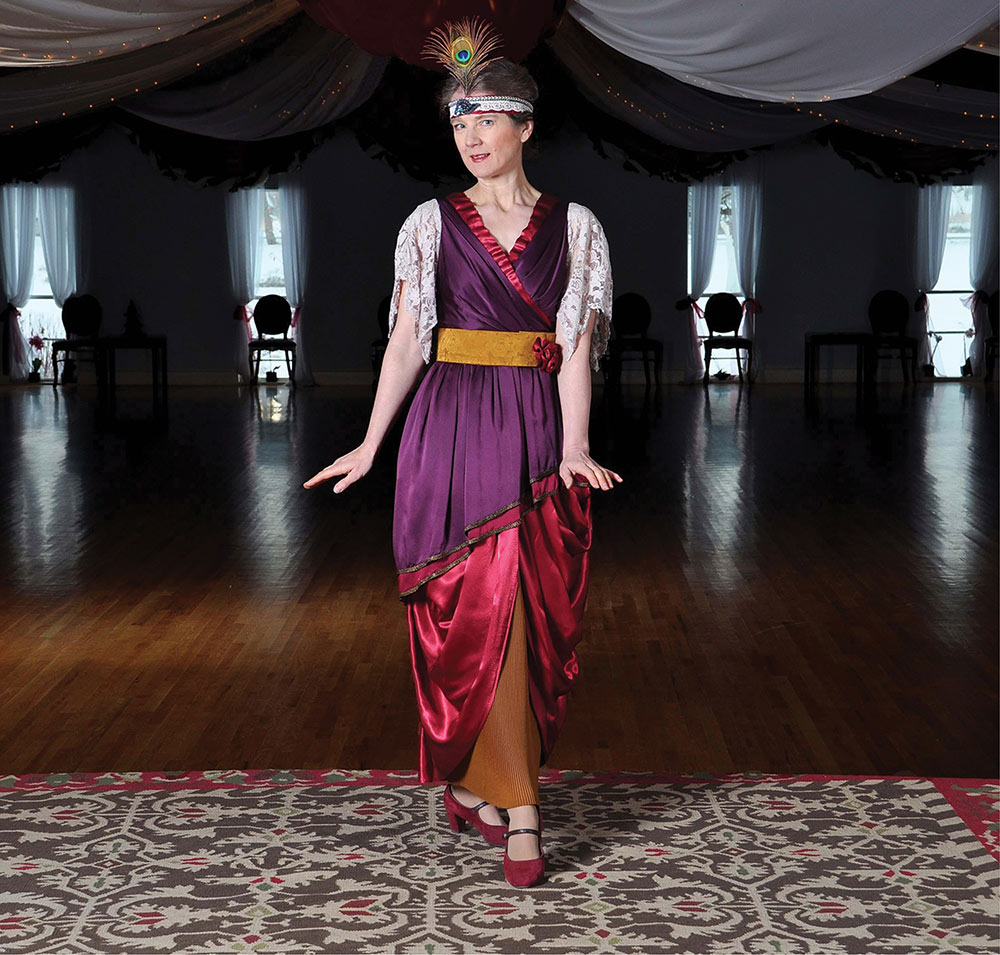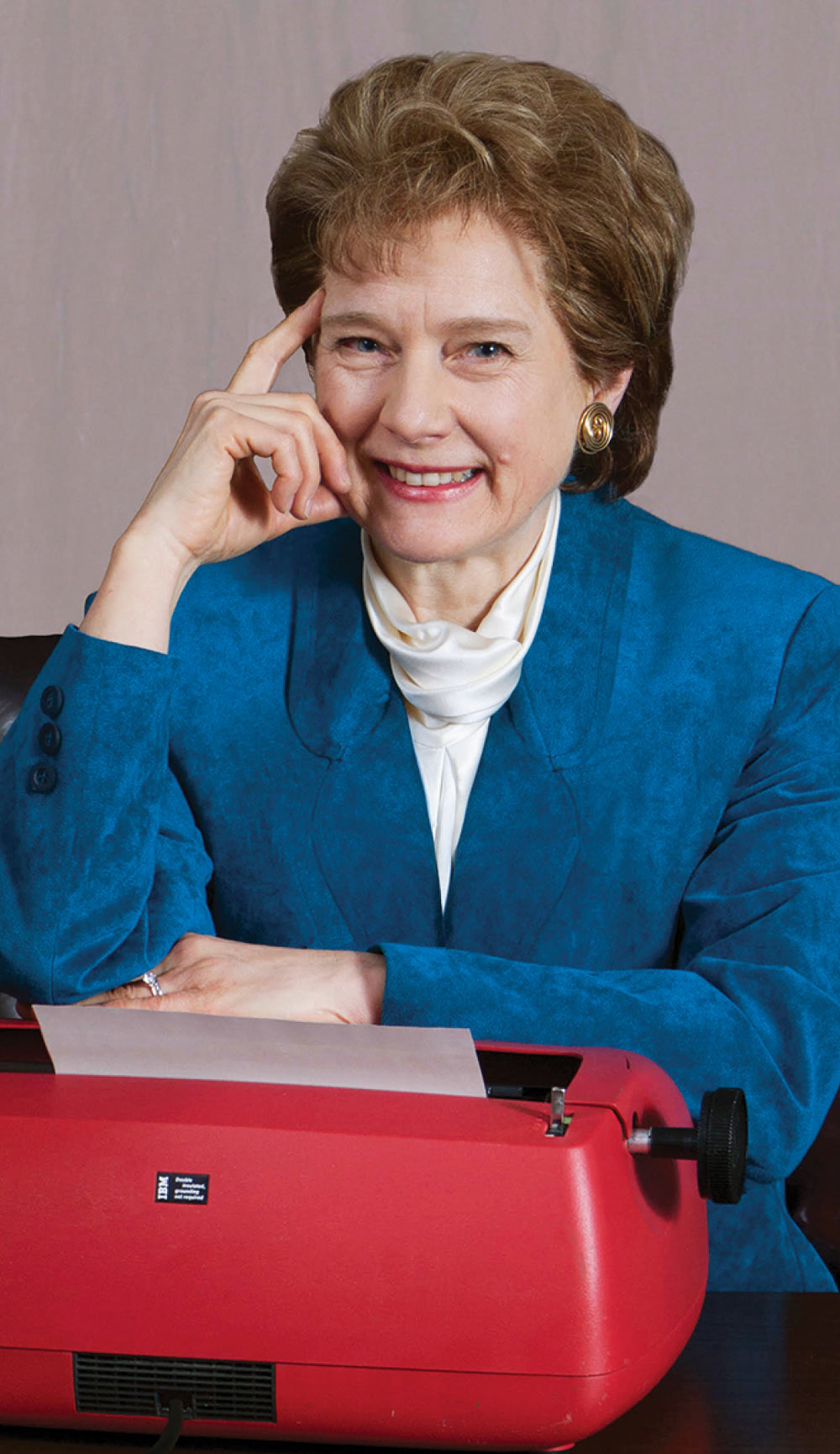Re:living history
usan Marie Frontczak ’77 engineers stories. Over more than two decades, this computer designer-turned-living-history scholar has given more than 875 performances abroad and in almost every U.S. state.
She likes to joke that she travels with “my ladies” — performing as Red Cross founder Clara Barton, dancer Irene Castle, scientist Marie Curie, First Lady Eleanor Roosevelt, author Mary Shelley, and humorist Erma Bombeck.
The passion for precision this engineering major brings to her roles befits a person who created integrated circuits and medical software for Hewlett Packard for 14 years. After a year’s sabbatical from HP and more time honing her craft, Frontczak spent two years developing her first historic persona — Curie, the discoverer of radium and two-time Nobel Prize winner.
Reading a biography of Curie when she was 10 inspired Frontczak to become an engineer. At Swarthmore, only three other women shared her major. Curie inspired her to conquer tough courses.
Frontczak’s pursuit of realism led her to seek permission from Curie’s granddaughter to examine the scientist’s archives. She flew to Paris to dive into Curie’s lab book and letters and even created a reproduction of a Polish stamp on a letter she uses as a prop.
“I know no one in the audience will ever see that, but those kinds of details help me do my job,” says Frontczak, who was drawn to engineering because of her love of solving problems. The Farmington Hills, Mich., native chose Swarthmore because it let her blend her engineering degree with a humanities education. “It was awesome,” she says.
The goal of inspiring audiences has her traveling to as many 50 events a year. “What I do is more than a history lesson,” she says. “It’s humanities — history, religion, law, policy, language, literature. What does it mean to be human, and what does it mean to be a good human? Let’s talk about that, dig in, and find our common humanity.”
To reach a wider audience, a filmed version of her one-woman “immersive theater” show Humanity Needs Dreamers – A Visit with Marie Curie is available for group gatherings hosted by local scientists. Since 2020, 11,000 people at 150 events have seen it, thanks, in part, to a National Science Foundation grant.
All of her characters have taught her to be undeterred by obstacles. “Find your way around them,” she says, “because they will be there.”
From Roosevelt, she learned the value of seeing things as others see them and finding common ground. “She so believed in every human being and always took a positive, instead of a scolding, approach,” says Frontczak.


“She felt as though she really had been in Curie’s presence,” Frontczak recalls. “She knew who I really was, but it was so moving.”
On her website, she dubs herself Storysmith® — “Like a blacksmith crafting iron, I heat up, hammer, and craft a story with strong forces before letting it cool into a tale worth sharing.”
She has drawn up Storysmith® principles to support her methodical approach, such as: Live the story for the first time right then and there, use all five senses, and let yourself be vulnerable. A highlight of the Curie performance comes courtesy of a bit unreal theater magic — she reveals a test tube that emits the blue glow of her radium-chloride.
Teaching is another of Frontczak’s roles. For the past 15 years, she has trained adult Living History scholars. She also teaches Colorado schoolchildren how to compose and deliver historical monologues. Curie and Roosevelt are the figures Frontczak is most often asked to bring to life.
Castle, the dancer and fashion trendsetter, is her least known persona. Frontczak claims to have no favorite, but shares Castle’s love of dancing. At Swarthmore, she twirled twice-weekly at International Folk Dancing and later taught Ragtime Dance and Swing across the United States.”
“After I had Curie, Roosevelt, and Shelley, I thought, ‘What about Irene Castle?’ I already had a ragtime-era frock, so she joined the ladies,” says Frontczak. A dressmaker creates her costumes to her specifications. When Frontczak appears as Curie, she wears a long-sleeved, high-collar black silk outfit with a floor-sweeping skirt. She had it created to duplicate what she believes Curie wore when she received her first Nobel Prize.
When Frontczak took her leave of absence from HP, people told her she was brave. But she recalls not feeling that way.
“I didn’t know if I would like being a full-time presenter or if I could make a living at it. But, as a scientist, when you don’t know the answer to a question, you do an experiment to find the answer,” she says.
“My point of view was, ‘I am doing an experiment, I am on an adventure,’ says Frontczak. “I found that I do like doing it full time. I’ve had a blast and I wouldn’t trade my life for anything.”